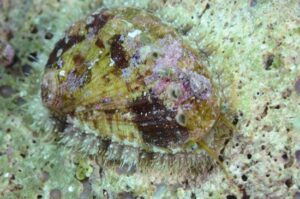Along the west coast of the Istrian peninsula there are several groups of islands – the largest and most interesting being the Brijuni group of 14 small islands.
The Brijuni Islands National Park is an oasis of harmony between man, animal and plant life. There are almost 700 plant species and about 250 bird species on the islands, and the mild Mediterranean climate makes it a pleasant health resort.
After leaving Fažana, the line of green islands viewed from the boat transforms into Veliki Brijun, the largest of the 14 islands. Traces of dinosaurs and ancient remains as well as achievements of modern times are all present in this area whose development as an exclusive resort started in 1893 thanks to the Austrian industrialist Paul Kupelwieser, owner of the Brijuni Islands. This fashionable seaside resort, and one of the world’s leading health resorts, started developing and gaining popularity all over Europe and worldwide, but this unfortunately ended with the beginning of World War I.
Dinosaurs lived in Brijuni approximately 130-100 million years ago and it is now rich in dinosaur remains which can be seen at four sites on Veliki Brijun. These remains are from the Cretaceous period, the last period before their extinction, and more than 200 prints of amazing reptiles can be seen in the Cretaceous park.
As a Mares’ ambassador, I was invited to dive with the Honorary Protection Military Unit, which secures special parts of the Brijuni Islands, and divers of the State Civil Protection Intervention Unit. We participated in the exercise “From Mobilization to Intervention” aimed at coordinating water rescue teams and diving groups, and organizing diving interventions. This activity was the result of many years of cooperation between divers through activities including those of an educational nature, participation in joint exercises, environmental actions and providing assistance in real situations such as major floods and earthquakes.
After the various exercises, a sea clean-up was held. I was honored to participate in the organization of the underwater clean-up and make an active contribution to cleaning the sea. Ecological cleaning actions are needed in order to raise awareness of the negative impact of man on the seabed, i.e. the need to preserve the flora and fauna of our seabed. Everything that is carelessly thrown into the sea is somehow returned to our plates. Let’s preserve what is valuable.
We hope to have raised at least a little awareness of the preservation of our sea with this event.
The post Diving at Brijuni National Park appeared first on Mares – Scuba Diving Blog.
Read MoreDiving, Brijuni, climate change, conservation, Croatia, diving, fish, Istria, Mares, ocean, photography, research, underwaterMares – Scuba Diving Blog


